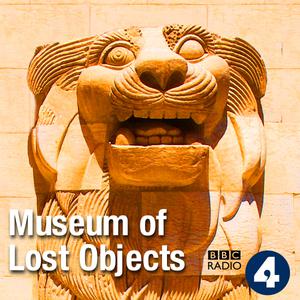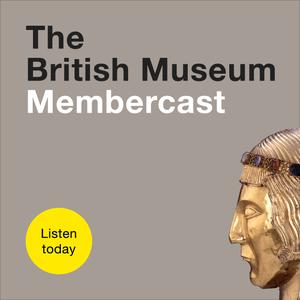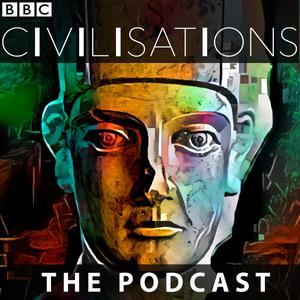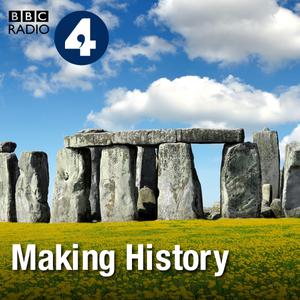
Museum of Lost Objects
BBC
Tracing the histories of antiquities and landmarks that have been destroyed or looted in Iraq and Syria, India and Pakistan.
- 13 minutes 1 secondWinged Bull of Nineveh
The Museum of Lost Objects traces the histories of 10 antiquities or cultural sites that have been destroyed or looted in Iraq and Syria.
With hundreds of thousands of lives lost, millions of people displaced and some of the world’s most significant heritage sites destroyed, the wars in Iraq and Syria have had an enormous cost. While the historical artefacts that have been bombed, defaced and plundered can never be restored, they are very well remembered. Through local histories, legends and personal stories, the Museum of Lost Objects recreates these lost treasures and explores their significance across generations and cultures, from creation to destruction.
The winged bull was a huge 2,700-year-old sculpture that stood guard at the gates of one of the most fabled cities in antiquity – Nineveh, modern-day Mosul, northern Iraq. Militants from the Islamic State group defaced the winged bull in February 2015, almost a year after seizing control of the city. We tell the story of the bull and the role of Nineveh in the origins of Iraqi archaeology.
This episode was first broadcast on 29 February, 2016
Presenter: Kanishk Tharoor Producer: Maryam Maruf
Picture: Winged Bull of Nineveh, drawn by Eugène Flandin Credit: The New York Public Library
Contributors: Mazin Safar, son of Iraqi archaeologist Fuad Safar; Mark Altaweel, Institute of Archaeology, UCL; and Iraqi archaeologist Lamia al-Gailani, SOAS
With thanks to Nigel Tallis and Sarah Collins of the British Museum, and Augusta McMahon of the University of Cambridge.
23 June 2020, 3:00 pm - 57 minutes 58 secondsThe Fire That Scorched Brazil’s History
It’s been a year since Brazil’s National Museum burned down in a fire. Not only was its collection one of the most extraordinary in the world, but Brazil’s entire history ran through the museum. On the second floor you could meet the prehistoric skeleton that was the ‘mother’ of all Brazilians; on the third, listen to Amazonian folklore about exploding jaguars; and downstairs, slide into the slippers of a slave king. Now, the only intact artefact on site is a huge iron rock from outer space – the Bendego meteorite. The National Museum and its precious archive of Brazil’s past may be in ruins, but amongst the ashes there’s a battle to revive it. Presenter: Kanishk Tharoor Producer: Maryam Maruf
With thanks to Roberta Fortuna
Contributors: Cahe Rodrigues, carnival director; Dom João, photographer and descendent of Brazil’s last emperor; Laurentino Gomes, journalist and author; Monica Lima, historian; Mariza Carvalho Soares, historian and museum curator; Aparecida Vilaça, anthropologist and author of Paletó and Me; Bernabau Tikuna, linguist; Tonico Benetiz, anthropologist; Murilo Bastos, bio-archaeologist; Luciana Carvalho, paleontologist and deputy director of rescue Museu Nacional; Sergio Azevedo, paleontologist and director of Museu Nacional’s 3D printing lab
Voice over performances by: Fernando Duarte, Marco Silva, Silvia Salek; Thomas Pappon Picture: Brazil’s National Museum – or Museu Nacional – on fire September, 2018 Credit: Getty Images
This edition of Museum of Lost Objects is broadcast on BBC World Service.
1 September 2019, 2:00 am - 16 minutes 17 secondsTagore’s Nobel Prize Theft
Rabindranath Tagore, the celebrated Bengali writer, is one of the greatest figures in modern South Asian history. In 1913, Tagore became the first non-westerner to win a Nobel Prize, but just over a decade ago, his Nobel medal was stolen – and still hasn’t been found. This episode looks at Tagore’s legacy, how his songs and poems are ubiquitous in Bengali life, how he inspired revolutionaries and reformers in South Asia, and how his suspicion of all nationalisms - even anti-colonial nationalism - makes his work feel thoroughly contemporary and relevant today.
Presented by Kanishk Tharoor Produced by Maryam Maruf
Contributors: Arunava Sinha; Rahul Tandon; and Saroj Mukherji
With thanks to Minu Tharoor; CS Mukherji; and Sudeshna Guha
Image: An unseen vendor picks up a cut out photo of Indian poet Rabindranath Tagore Credit: Getty Images
26 July 2017, 9:00 am - 18 minutes 25 secondsJinnah’s Last Home
Ziarat Residency was a former sanatorium in the hills of Balochistan, and it’s where Muhammad Ali Jinnah - the founder of Pakistan – spent the last three months of his life. The building acquired great significance after his death – it was even on the 100 rupee note, and was eventually turned into a museum. But just four years ago, Ziarat residency was fire-bombed and burnt to the ground by Balochi separatists.
Presented by Kanishk Tharoor Produced by Maryam Maruf
Contributors: Nayyar Ali Dada; Saher Baloch; Ayesha Jalal, Tufts University; Pasha Haroon;
With thanks to Fifi Haroon
Image: Rebuilt Ziarat Residency after 2013 Credit: Nayyar Ali Dada Associates
25 July 2017, 9:00 am - 13 minutes 47 secondsDelhi’s Stolen Seat of Power
In March 1739, the Persian warlord Nader Shah laid siege to Delhi. He destroyed and plundered the city. Among his ‘Delhi loot’ was the famous Jeweled or Peacock Throne of the Mughal Empire. It took seven years to make, and seven elephants to cart it away forever - and it's been lost ever since. This episode stretches back to stories of empire well before British rule, and looks at how narratives of conquest and loss still have a powerful hold over South Asians.
Presented by Kanishk Tharoor Produced by Maryam Maruf
Contributors: Yuthika Sharma, University of Edinburgh; and Manan Ahmed, Columbia University
With thanks to Sussan Babaie, Courtauld Institute of Art
Image: Persian ruler Nadir Shah on the Peacock Throne after his victory over the Mughals Credit: Alamy
24 July 2017, 10:00 am - 14 minutes 27 secondsThe Keeper of Buddha's Bones
The mystery of the 2,000 year old little bronze box, the Kanishka casket, that was said to hold the remains of the Buddha himself.
Presented by Kanishk Tharoor Produced by Maryam Maruf
Contributor: Vazira Fazila-Yacoubali Zamindar, Brown University
Picture: Replica of the Kanishka casket at the British Museum Credit: BBC
22 July 2017, 10:00 am - 3 minutes 51 secondsThe Cricketer Who Lost His Team
Bonus pod! Amir Elahi, the great uncle of Columbia University historian Manan Ahmed, became rivals with his former Indian teammates when he left for Pakistan.
Image: Amir Elahi and Dattaram Hindlekar, members of the All-India cricket team, 1936 Credit: Getty Images
21 July 2017, 3:00 am - 29 minutes 14 secondsKashmir’s Palladium cinema
Kanishk Tharoor explores artefacts and landmarks caught up in India and Pakistan's independence in 1947. In this episode, the life and times of the Palladium cinema.
The Palladium was one of Srinagar’s oldest and most popular movie theatres. It was on Lal Chowk, a square in the heart of the city. From the 1940s, the building was the backdrop to many of Kashmir's major political events. Today it stands in ruins, an unexpected casualty of the ongoing conflict, and now, there are no public cinemas left in Srinagar.
Presented by Kanishk Tharoor Produced by Maryam Maruf
Contributors: Krishna Mishri; Imtiyaz; and Neerja Mattoo
With thanks to Andrew Whitehead
Museum of Lost Objects series two is broadcast on BBC World Service.
Image: Cadets during a National Conference rally at Lal Chowk, Srinagar 1944 Credit: India Picture
18 July 2017, 10:25 am - 22 minutes 50 secondsThe Necklace That Divided Two Nations
Seventy years ago, India and Pakistan became independent nations - but at a cost. People and lands were partitioned, and a once shared heritage was broken apart. Kanishk Tharoor explores the tussle for ancient history and the prized artefacts of the Indus Valley civilization. There was a bureaucratic saga over the fates of the priest-king, the dancing girl, and the jade necklace so precious to both India and Pakistan that neither country could let the other have it whole.
Presented by Kanishk Tharoor Produced by Maryam Maruf
Contributors: Maruf Khwaja; Saroj Mukherji; Vazira Fazila-Yacoubali Zamindar, Brown University; Sudeshna Guha, Shiv Nadar University
With thanks to Anwesha Sengupta, Institute of Development Studies Kolkata
Museum of Lost Objects series two is broadcast on BBC World Service.
Image: The Mohenjo Daro jade necklace that was cut in two. India's share on the left, Pakistan's share on the right. Credit: Archaeological Survey of India and Getty Images
15 July 2017, 10:00 am - 28 minutes 20 secondsNimrud and Hatra
Nimrud is a 3,000 year old archaeological site blown up by the so-called Islamic State. The Iraqi archaeologist Muzahim Hossein spent 30 years excavating there, and he goes back for the first time to see what remains. And the story of one Iraqi family who grew up with the temples and talismans of the beautiful, fabled city of Hatra.
Including contributions from Layla Salih, Nineveh Heritage Buildings; Alessandra Peruzzetto, World Monuments Fund; and Watha Saleh. Presented by Kanishk Tharoor Produced by Maryam Maruf With thanks to Eleanor Robson, Lamia al-Gailani, Ali Juboori, Mehdi Musawi, Faisal Irshaid, Lucinda Dirven and Roberta Venca.
Museum of Lost Objects series two is broadcast on BBC World Service.
Image: Gorgon head in Hatra Credit: Getty Images
10 June 2017, 7:05 am - 27 minutes 18 secondsReturn to Aleppo
The story of one neighbourhood in Aleppo, and how it changed the lives of two Syrians caught up in the war.
Zahed Tajeddin is a sculptor and archaeologist whose family have lived in Aleppo for generations. He owned a beautiful medieval courtyard house in a neighbourhood called Judaydah, part of the city's historic centre. But Zahed was forced to abandon his house in 2012, when Judaydah became a battleground between government forces and rebel fighters. He makes the emotional and dangerous journey to see whether his home survived the conflict.
Abu Ahmed is a pharmacist who set up Judaydah's only medical centre. He stayed in Aleppo throughout the conflict, giving first aid, medicines and comfort to the local residents. He was one of the last people to flee rebel-held Aleppo after the government advance in December 2016.
Presented by Kanishk Tharoor Produced by Maryam Maruf
With thanks to Elyse Semerdjian, Mustafa Abu Sneineh, Mehdi Musawi, Dr Hatem and Emily Webb.
Image: A courtyard house in Judaydah. Credit: Getty Images.
10 June 2017, 4:00 am - More Episodes? Get the App
Your feedback is valuable to us. Should you encounter any bugs, glitches, lack of functionality or other problems, please email us on [email protected] or join Moon.FM Telegram Group where you can talk directly to the dev team who are happy to answer any queries.
 The British Museum Podcast
The British Museum Podcast
 Dr Janina Ramirez - Art Detective
Dr Janina Ramirez - Art Detective
 The British Museum Membercast
The British Museum Membercast
 The Civilisations Podcast
The Civilisations Podcast
 The National Archives Podcast Series
The National Archives Podcast Series
 Making History
Making History